Fun Facts You Never Knew About the Maya Civilization
Which ancient civilizations were the most mysterious in all of history? Though there are quite a few contenders, the Maya have to be close to the top. They existed many centuries ago, and their culture is awash with mysteries. Have you ever wondered what the Maya ate, how they dressed, or what their relationships were like? This article will give you a deeper insight into the mysterious Maya and their fascinating beliefs and rituals.
The ancient Maya culture was founded on complex beliefs, traditions, and rituals. If you’re wondering why we use the term “Maya” rather than “Mayans,” it’s because this is the correct way of referring to these people. “Mayan” refers to the language only while “Maya” is both the singular and plural term for the people and their culture. To learn more, read on for 30 fascinating facts about the ancient Maya!
1. The Maya Invented Chocolate (and the Word “Cacao” is Mayan)
Did you know that the earliest evidence of chocolate comes from the Maya civilization? Thousands of years ago, the Maya discovered the power of chocolate and made it one of their most prized commodities. They were the first to cultivate and grind cocoa beans and enjoyed many cups of hot cocoa.

ThriveTribe.com
Maya royalty drank a blend of chocolate, chili peppers, and water, while the rest of the population ate their chocolate raw. If you want to be like the rich folk in this ancient society, feel free to throw some chili powder in your hot chocolate!
2. Thank the Maya for Guacamole!
Anyone who’s ever had guacamole knows it’s one of the best things about Mexican food! Did you know that the origin of this delicious side dish can be traced back to the Maya? These people grew several different varieties of avocados centuries ago. They made the earliest versions of guacamole, along with other recipes featuring avocados.
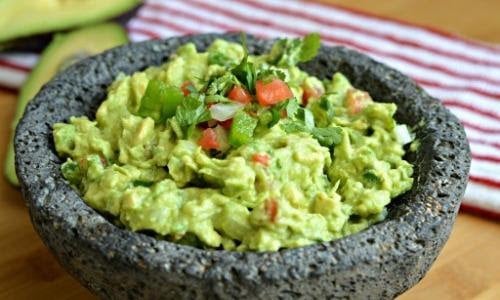
Avocados were a common part of the Maya diet and they were used to create a number of different dishes. Did you know that the first recipe for guacamole was recorded by a Mexican historian in the 1500s, and it included onion, chilies, and lime juice – just like the delicious recipes we use today. Yum!
3. The Maya Used Chocolate As a Form of Currency
Today, we live in a world where money is widely used and valued. Did you know that chocolate was used as currency by the Maya? In fact, during the peak Maya period (around 250 to 900 CE), they actually used cacao beans (which they made into chocolate) as money to buy goods and services!
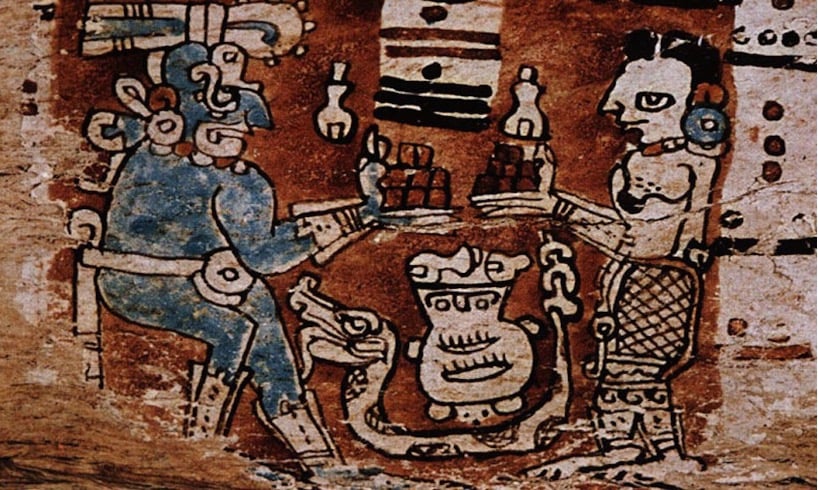
Sacred Science
The Maya used cacao beans as a form of currency because they were so valuable and scarce. They considered the beans to be a gift from the gods. The discovery of chocolate and its medicinal and wellness properties made it even more precious. Indeed, cacao was so revered that it was frequently used in religious rituals.
4. They Went to Extremes with Body Modification
Cranial deformation is a process by which the skull of a human being is intentionally reshaped. Throughout many cultures, this was performed on the head of an infant through the application of force. Among the Maya, it was believed that having a more flattened head meant that you were more noble and closer to the gods.
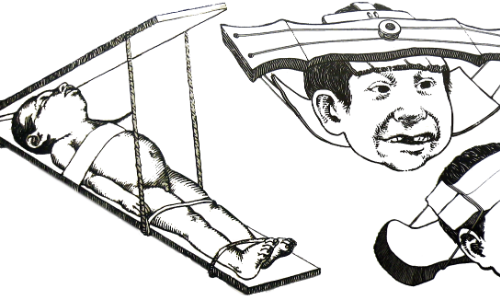
The ancient Maya have a history of head flattening to show off high status and improve beauty. The baby’s heads were strapped from a young age, causing the skull to compress over time. If it sounds odd, just imagine what future archaeologists will think of all the implants and other modifications they’ll find when they dig up the remains of our civilization!
5. Bigger Was Better When it Came to Noses
The Maya had some unique ideas about beauty, but what’s even more interesting is their conception of femininity. According to the culture of the time, the wider and larger your nose, the more beautiful you were. To them, nose size was directly proportional to your character!
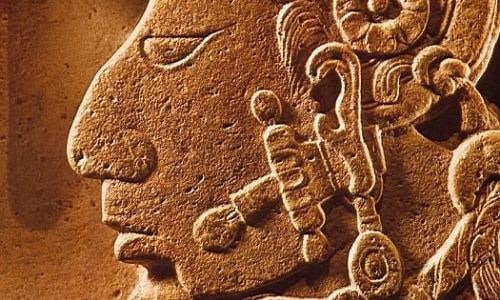
Some of the practices and ideas in the Maya culture would be considered odd by modern standards, but what we share with them is a desire to modify ourselves to meet the beauty standards of our time. One of their best options included attaching an artificial nose bridge to make their noses look wider.
6. They Had Odd Eye Ideals
With the Maya, beauty was not only associated with symmetry but also with their concept of the soul. According to the Maya, the Sun God Kinich-Ahau was cross-eyed! To make this God happy, some Maya tried to deliberately make their children cross-eyed as well.
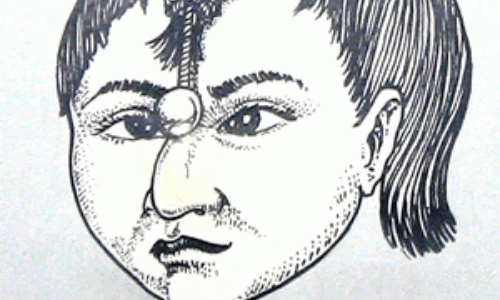
As shown in the picture, they would attach a trinket to a child’s head, positioned between the eyes. The goal was to make the baby cross its eyes so much in trying to look at the trinket that the expression would become permanent.
7. They Share a Toothy Trend with Modern Rappers
The Maya took a lot of pride in their teeth, and they were a culture that prized the smile as being very important. The Maya were known to use gold and precious stones to fill their teeth. Turquoise, jade, and quartz were the most common inlay materials.
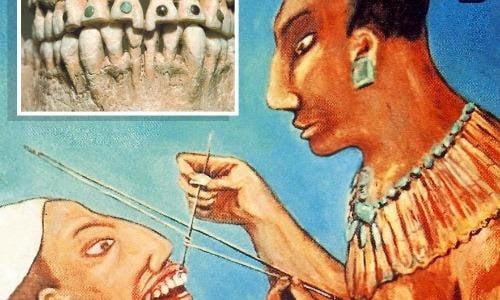
The Maya had a very specific beauty ideal: pointed, sharp teeth. While this sounds pretty horrific, records of the time do prove that the Maya were all about the artificial sharpening of their teeth. They attributed different characteristics to people with different shaped teeth. Pointed teeth were considered to be more beautiful and elegant.
8. They Adored Jewelry
The ancient Maya were fond of jewelry and ornaments. They wore earrings, nose rings, lip rings, and necklaces, as well as elaborate headgear. They adorned themselves with these items to show their social status and the power they possessed.
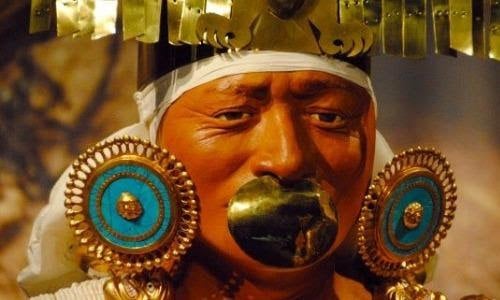
Even those in poverty wanted to look rich. Since they couldn’t afford it, they wore jewelry made from painted clay, bones, and wooden sticks in an attempt to imitate the more expensive metals and gemstones. Upper-class citizens always wore precious metals and jewels.
9. The Maya Loved Tattoos
Today, tattoo culture has become a global phenomenon, with so many people getting inked for reasons varying from religion to popularity. The tattoos of the Maya were typically made with black ink. The meanings could vary from symbolizing spiritual growth, strength, or protection.
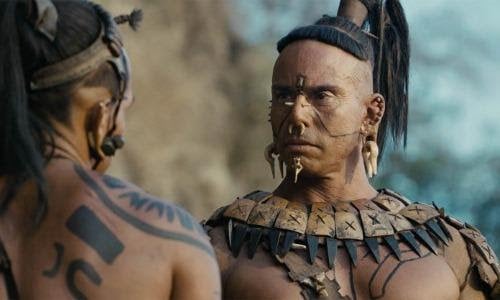
The Maya used tattoos for religious rituals and rites of passage. The chest, arms, and legs were popular spots for tattoos that were permanent for both men and women. The designs were symbols of their gods and of natural elements such as animals, birds, and water.
10. Human Sacrifices Were Common
While there were many reasons for sacrificing humans, one of the most common was to please the gods in the hopes that they would end an ongoing drought. Though this sounds excessive, it was based on their understanding of both nature and human nature at the time.
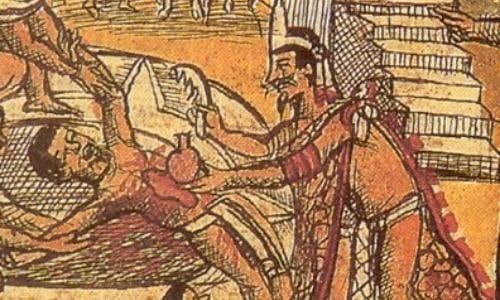
Human sacrifice was commonplace among those who believed in the power of the gods. In some sacrifices, the heart would be removed from a living person. In other cases, the victim was thrown into a well. In drought sacrifices, the victim was covered in blue paint to please the rain god!
11. Mental Health Was Valued
The Maya had a very clear understanding of mental health issues, and they were way ahead of their time in terms of treating them. Except maybe for the whole human sacrifice thing. They viewed mental health in a harmonious way, recognizing the immense value of balance.
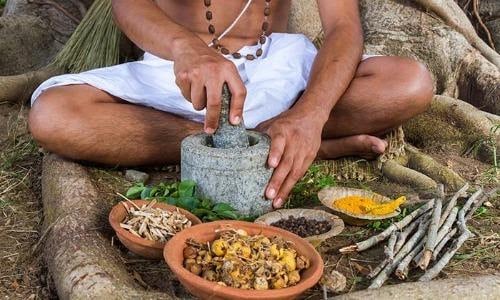
The ancient Maya recognized several psychiatric conditions, including overthinking and depression. It’s not exactly a secret that mental health is one of the most important issues of our time. The Maya were right all along – we’ve been overlooking and under-appreciating the importance of mental health. Meanwhile, they hit the nail on the head over 2,000 years ago.
12. They Loved Saunas
Sauna sessions have been around for a long time. The Maya built sauna huts and created steam using water and a heated block of stone. They would pour water over the stone until the heat vaporized the moisture into steam.
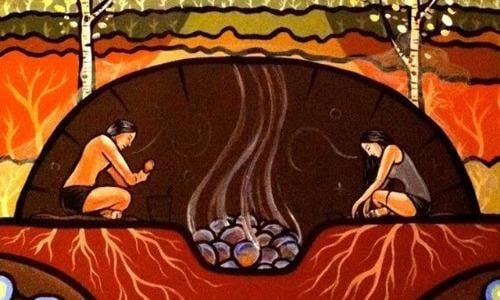
Created by mixing fire-heated rocks, herbs, and water, the steam bath, or zumpul-che, was used to improve health, for spiritual cleansing as well as for ritualistic practices. It was seen as a way of purifying the body and benefiting the soul.
13. The Maya Had a Talent for Astronomy
The Maya had surprisingly sophisticated astronomical knowledge, and their interest in mathematics and remarkable success in calculating and predicting events of all kinds have made them famous. The Maya were extremely adept at astronomy, and even though they had no telescopes, they were still able to accurately calculate phenomena such as solar and lunar eclipses.
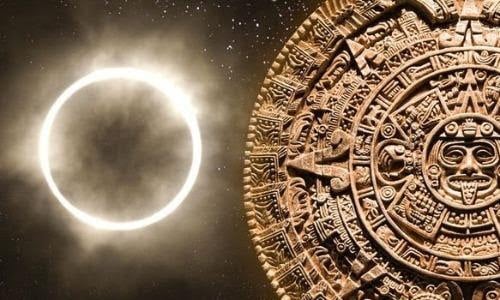
The Maya had a true understanding of the movements and cycles of the planets and other heavenly bodies. The planet Venus played an important role in their calendar. They could calculate the length of a single lunar month and the time it takes for the Earth to make one complete whirl around the sun.
14. The Maya Calendar Reset in 2012
Have you heard of the Maya calendar? It has been misinterpreted by many people. Some have misunderstood what the long-count calendar was all about, while others have claimed that it spelled out the end of days in 2012. The Maya created this tablet based on their calendar of 13 moon cycles, which was the fulcrum of their civilization.
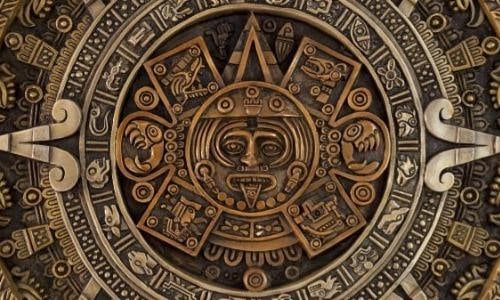
The calendar represented time as it appeared to them – not one day at a time but how life unfolded over thousands of years. Some people say that it predicted the end of the world in December of 2012, but what the Maya really meant was that it would be the end of an era.
15. They Invented Ball Games
The Maya were the first to play ball games in 2,000 BCE. The tournament, popular with the Maya and other nearby cultures, was like a blend of soccer and basketball but with plenty of other aspects going on. The game was called pok-ta-pok and a modern version of it still exists. It is now known as ulama.
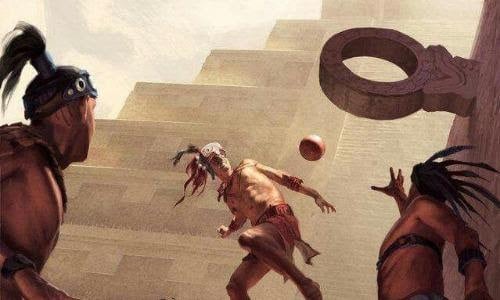
Like basketball, pok-ta-pok has a hoop. However, it is positioned vertically instead of horizontally. Players could not use their hands, head, or feet to kick the ball, so they would have to bounce it from their body at the exact right time in order to get it through the stone ring. Winning the game often meant earning the honor of being a human sacrifice.
16. Some Sacred Traditions Survive
On Cozumel Island, one of Mexico’s most beautiful and exotic places, the Maya used to perform a sacred ritual in honor of Xcaret, the jaguar goddess of medicine and midwifery. This annual ritual involved crossing a river in canoes to reach the island. Even today, this ancient ritual is carried out on the island.

Each year, brave adventurers from all over the world sign up for a journey back in time to experience a lost Maya civilization. They start by hiking through the lush, tropical rainforest to the sacred cenote and then participate in various ceremonies in honor of the goddess.
17. The Mayan Language Is Amazing
The Maya civilization was the most advanced of all American-Indian civilizations and is one of the most mysterious and least understood. Their language, Mayan, featured complex symbols used mainly on stone stelae and other monuments but also on pottery and clothing and in books known as codices.

The Mayan writing system had over 800 characters and combined both phonetic and logographic principles, making it one of the most complex languages ever developed. Tatiana Proskouriakoff was a Siberian-American archaeologist who deciphered the Mayan script. She made many discoveries about this mysterious culture, working tirelessly on uncovering its secrets.
18. They Understood the Concept of Zero
The Maya wrote their number system as a combination of dots and bars. If there were no dots or bars, there was no value to the symbol – in other words, it was zero. This is how the Maya represented zero in their texts. They believed that it represented a void or emptiness.
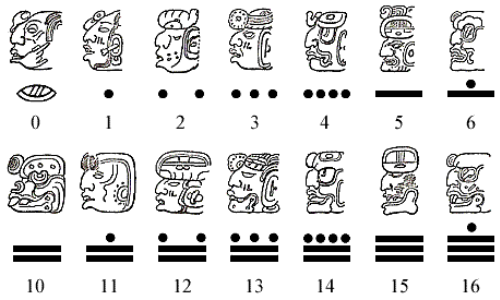
Zero is a concept that is not intuitive to people. It was first seen in Mesopotamia around 3 BCE and was independently developed by the Maya around 4 CE. They used a symbol that looked like a shell to denote zero.
19. They Wrote Books
The Mayan codices are books created by the Maya during Pre-Columbian times. They used the bark of fig trees to make paper which they folded into an accordion-like shape. The books usually contained drawings or symbolized texts related to the Maya beliefs.
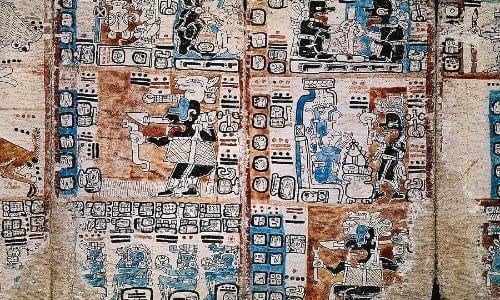
The Spanish conquistadors were purportedly responsible for the destruction of most of the pre-Columbian Mayan codices when they invaded Central America in the 16th century. Only a handful of the many Mayan books have been preserved. The Spanish conquerors burned and destroyed most of the Mayan codices when they invaded their land.
20. They Used Psychedelic in Their Spiritual Practices
The Maya had strong beliefs in the world of the supernatural, with many rituals taking place to connect the spirit realm with their own. When preparing for these rituals, the Maya ate a variety of psychedelic herbs and mushrooms, as well as the poison from certain frogs.
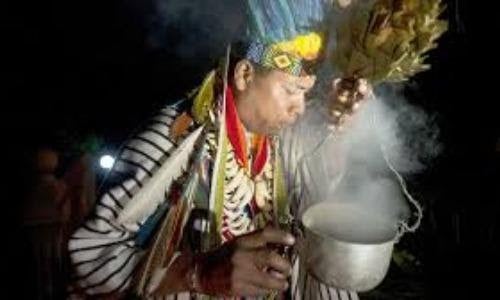
The psychoactive substances in the herbs and mushrooms would make the consumer hallucinate and enter a trance-like state where the spirit could journey out of the body and gain deep insight into our world and how it works. It was believed that this would allow them to connect with the spirit world and gain wisdom from the gods.
21. They Worshipped Many Gods
The Maya had a deity to represent every aspect of the natural world, such as a god of maize, a sun god, and a god of rain. There are said to be as many as 250 different gods in the pantheon of the Maya.
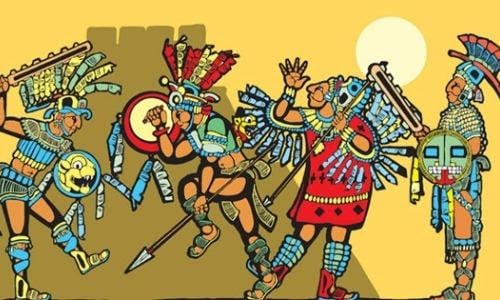
Itzamna was the most important of the gods and he had a powerful influence over them. To the Maya, he was the creator of Heaven and Earth. Without his help, humans could not survive, and in return for Itzamna’s blessings, they lived in fear and servitude to him.
22. Their Artifacts Are World-Famous
King Pakal lived through one of the most pivotal times in the history of the Maya civilization. He was buried in a carved stone tomb, and the lid of King Pakal’s tomb features a detailed and mysterious image. Beneath it, many interesting items were found, including carved jade.
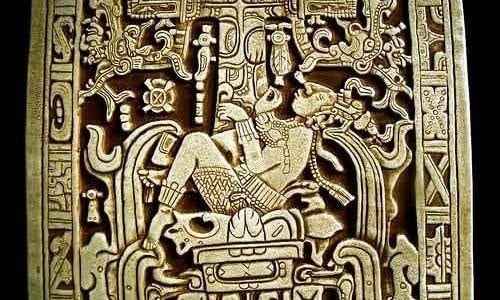
In this detailed carving on the lid of the tomb of Maya King Pakal, we see a human figure rising from a dark and gloomy underworld and ascending through a beam of light. The figure is rising on a celestial serpent and together they represent resurrection and ascension – concepts we are familiar with thanks to stories of near-death experiences.
23. Their Kings Claimed to Be Cosmic Beings
For centuries, the Maya were ruled by a series of powerful kings. They were a very complex civilization, and their kings had a large number of duties to fulfill. They ruled the country and acted as the intermediaries between the world of the gods and the world of the mortals.
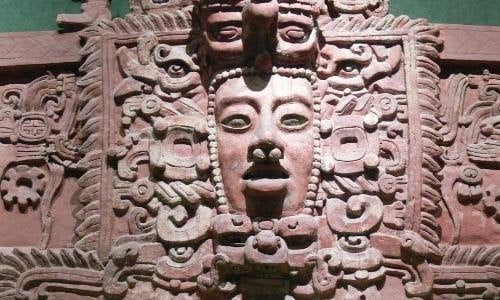
The kings of the Maya civilization played several important roles in the community. They had to be well educated and familiar with the traditions and laws of their society to take up this lofty position. They also claimed to be demi-gods who lived between the human and spiritual realms.
24. Their Artifacts Inspire Endless Conspiracy Theories
In some of the stone carvings and sculptures found in Maya ruins, the civilization is depicted as having contact with beings that wore what looks like modern-day helmets. These discoveries have caused some people to come up with wild conspiracy theories.
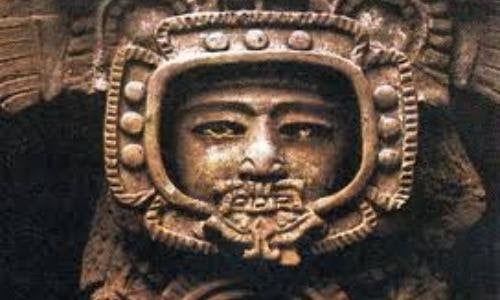
The Maya were skilled language experts, leading some to draw conclusions that they were in communication with aliens who gave them advanced architecture and language systems. This theory stems from the fact that the Maya speak an incredibly difficult language that allows them to construct extremely long phrases with just a few words.
25. They Had an Oral Tradition
One of the ways that the Maya preserved their history was through storytelling. They would create beautiful codexes that contained their history and culture, and these were passed down from generation to generation. These Mayan codices contained history, storytelling, creation myths, and other valuable nuggets of information about the culture.
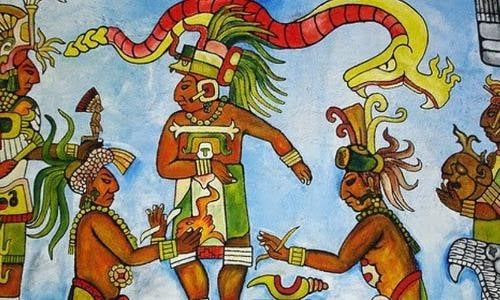
As time passed, many tales were forgotten, and the details and origins of others became unknown to most people. Fortunately, some have been recorded in a book called Popol Vuh: The Sacred Book of the Ancient Quiché People. It was written in 1701 and contains some of the stories of the Maya that were passed down for centuries.
26. They Built Complex Pyramids
When it comes to ancient civilizations, the main things most people think of are the Egyptian pyramids. The Maya pyramids are different from the Egyptian ones and are spectacular for their own reasons. The base of a Maya pyramid is square. They feature stunning architectural features including the ability to turn the clap of your hands into the call of the quetzal bird through acoustics.
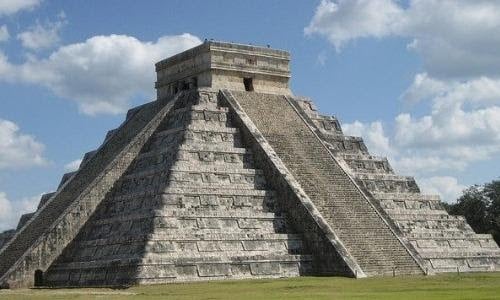
These structures became an important part of their culture and were used to house deities and bury kings and royal members. The biggest Maya pyramid, the 78-feet high Kukulkan, can still be seen at Chichen Itza, Mexico.
27. They Built Metropolises in the Dense Jungle
Calakmul was one of the largest of these Maya cities and is located in what is now Mexico. It had over 100,000 residents at its peak. The Maya built these massive cities in the middle of dense tropical rainforests, and this rich and fertile land spans down through Central and South America.
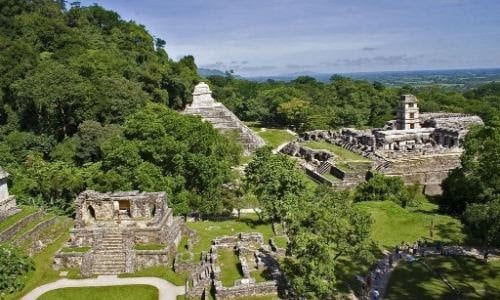
What would a great civilization be without great art? The Mayans were no different, and this is especially evident in the many beautiful structures. Built in a variety of styles, Maya ruins can be found throughout Mexico but are not to be mistaken for the Inca ruins that lie south in Peru.
28. Many Maya Sites Are Underground
The Ancient Maya civilization was very advanced and is still a mystery to today’s world. Underground temples, cities, and caves have been discovered by archeologists, revealing clues as to how they lived so long ago.
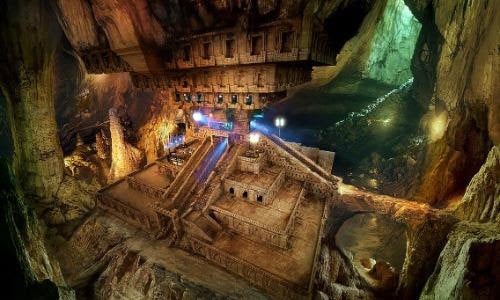
Chichen Itza is an important archaeological site in Mexico that is still being excavated today. It holds an abundance of secrets from the past. Two years ago, archaeologists found an untouched cave called Balamku at Chichen Itza. So far, over 150 objects have been found, each one instrumental in Maya religious rituals.
29. The Cause of Their Decline Is a Mystery
There is no single accepted theory as to what caused this great and powerful civilization to crumble. Of course, plenty of archaeologists have proposed theories about why the Maya empire fell, and while it is true that the civilization no longer exists, their descendants live on (we will learn more about this in the next slide).
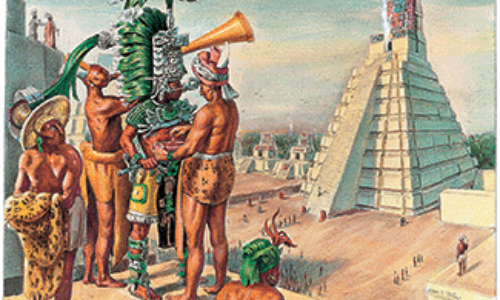
The decline of the Maya is a great mystery in archaeology. No one knows why they abandoned their impressive cities and centers of power. Some theories suggest that the Maya society was weakened by overpopulation, deforestation, drought, disease, or invasion.
30. The Maya Are Still Around
While there are no “native” Maya left, there are many descendants of the ancient empire who still live in Latin America. Despite all of the destruction and death that went hand-in-hand with the Spanish conquest, some Maya bloodlines survived.
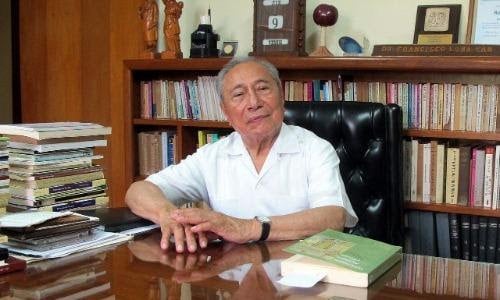
Most of their numbers were decimated by war and disease. However, a few remnants of their people still survive today in the remote corners of the rainforest that occupies Latin America. About 6 million Maya people still live in present-day Mexico, Guatemala, Belize, El Salvador, and Honduras.
